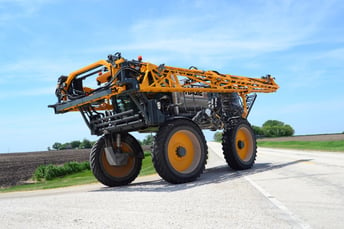Engineering an IF/VF Tire
A lot goes into making an IF/VF tire and even more goes into making one that performs up to our exacting standards. Check out this great video, where Field Engineer Pat Gaston talks about the ins and outs of IF/VF tires, and what separates our tires from what our competitors have to offer.
Asking a tire to flex under heavy loads and high speeds is no small task, and getting the tire to flex in the sidewall instead of by the bead near the rim takes a lot of engineering, and we've perfected the art of creating stronger IF/VF tires that are capable of using lower air pressure and flexing at the sidewall rather than the bead.  When most people think of steel-belted farm tires, qualities such as durable, sturdy, and puncture-resistant spring to mind. You wouldn’t be wrong to associate those traits with steel belts, but our IF/VF tires, do so much more. Our steel-belted IF/VF tires help deliver a more uniform, rectangular, and longer footprint—offering farmers better traction, less slippage, better fuel consumption, and extended wear while helping to reduce soil compaction.
When most people think of steel-belted farm tires, qualities such as durable, sturdy, and puncture-resistant spring to mind. You wouldn’t be wrong to associate those traits with steel belts, but our IF/VF tires, do so much more. Our steel-belted IF/VF tires help deliver a more uniform, rectangular, and longer footprint—offering farmers better traction, less slippage, better fuel consumption, and extended wear while helping to reduce soil compaction.
We could go on and on about the special compounds we use to dissipate the heat generated by the tire’s flexing, how our tread design further enhances traction in the field, or how we’re able to create a taller, narrower tire that easily maneuvers in the field while reducing soil compaction. But sometimes it's better to see and hear it than read it, and it’s even better when you can hear it from an expert like Pat!
 Contact your dealer to learn more about our IF/VF farm tires, and how they can help your operation increase productivity and efficiency while reducing cost.
Contact your dealer to learn more about our IF/VF farm tires, and how they can help your operation increase productivity and efficiency while reducing cost.

